Your company name is the first impression for your business. That’s why it pays to get it right.
And for some organizations, that may mean considering a new company name.
There are plenty of reasons you might want to rename your business. Maybe your company is constantly getting confused with competitors. Or perhaps, your business name no longer represents what you do or who you serve.
But once you’ve made the difficult decision to change your company name, the bigger question becomes how do you rename your business without losing customers? How do you create a new business name and brand that’s stronger than what you had before?
Don’t let those big questions stop you in your tracks.
Renaming your business can be scary, but it can ultimately pay off——if you do it the right way. And I’ll show you how to do it.
What Successful Rebranding Looks Like
We regularly work with companies to rebrand their business, which often includes creating a new business name.
Earlier this year, we helped a virtual event production company rebrand from VLC to Elsie (see below).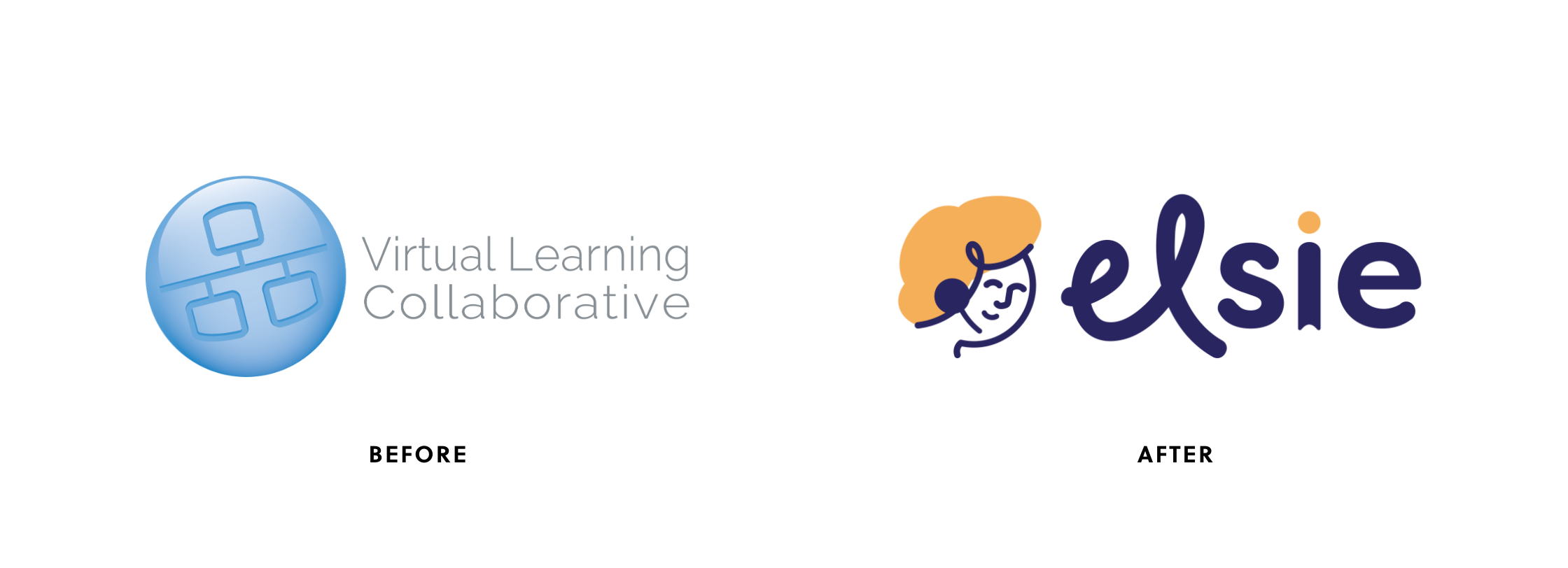 And a few years ago, we worked with a Nashville-based acupuncture clinic to completely rename and rebrand her business.
And a few years ago, we worked with a Nashville-based acupuncture clinic to completely rename and rebrand her business.
In the case of the acupuncture clinic, they were expanding the business to a second location, so the location-focused company name would no longer represent the communities they served.
The owner knew it was the right thing to do, but it was an emotional and difficult decision to let go of a name that had served her business well for nine years.
But, the end result has been overwhelmingly positive. Her patients have enthusiastically embraced the new name and the new brand represents the company in a much stronger way.
Here’s the before and after of their transformation.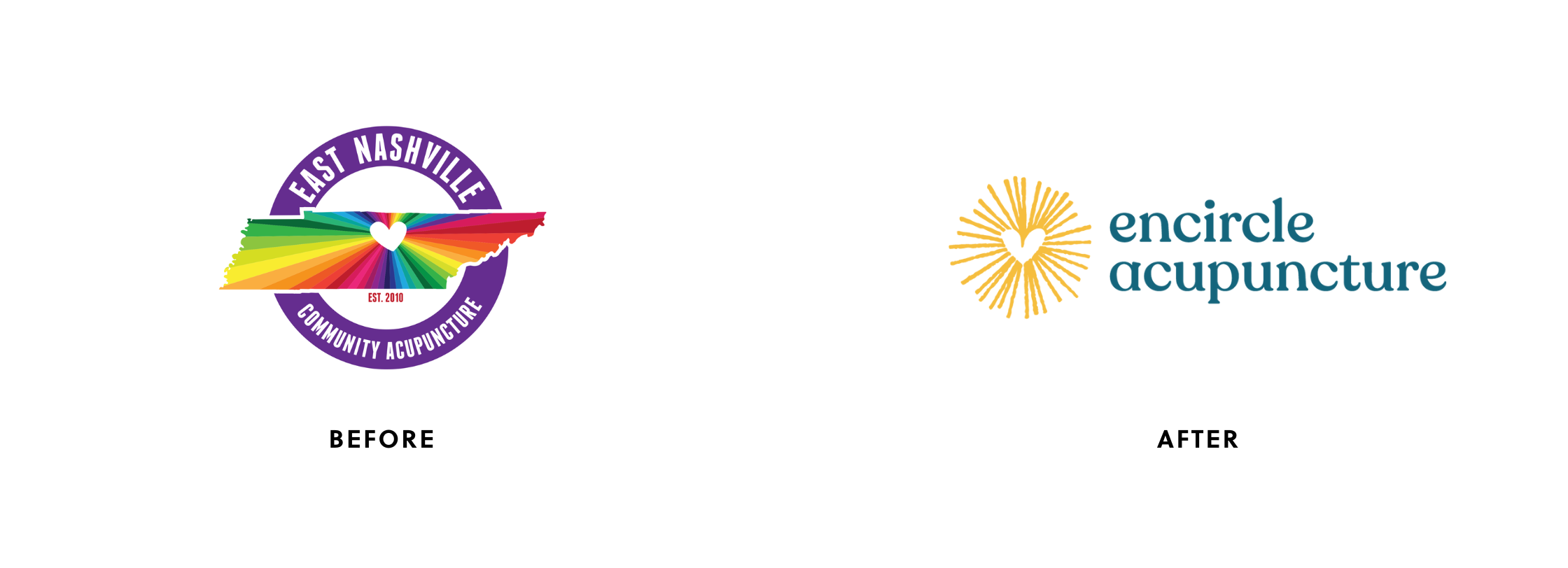
Want to achieve the same results?
We’ll walk you through the very process we used with this company to develop a better, stronger business name and brand.
What Not to Do When Renaming Your Company
Before we dive into how to rename and rebrand your business, let’s talk about what NOT to do.
The temptation might be to start throwing out new business name ideas with your team or even trying a business name generator or ChatGPT to create a name for you.
It seems counterintuitive, but diving right into brainstorming new name ideas or trying out AI solutions is not the best place to start. This approach will rarely help you identify a winning brand name.
Instead, you’ll end up with weak, generic or cliche’ options that aren’t any better than what you have now.
More importantly, this approach is not at all strategic, meaning that your name won’t do a great job of representing who you are, what you believe and what makes you different.
Instead, you’ll end up with a name that might not be any better than what you have now. And more importantly, it won’t be a strategic asset to your business.
5 Steps to Rename Your Business the Right Way
So, how should you go about the renaming process?
We’ll walk you through how we do this with our clients.
1. Start with brand strategy.
Before you can ever develop a new name for your business, you have to get clear on your company’s identity. Developing a brand strategy can help you do that.
Your brand strategy encompasses who you are as an organization and how you communicate that to the world. It will help you identify what makes you different and why your target audience should choose your business.
Oftentimes, companies need to rename or rebrand because they didn’t have a strong brand strategy when they started.
That’s why it’s so important to do the strategy work before you choose a new business name. This will help you build a strong foundation for all of your branding and marketing efforts moving forward.
What does a brand strategy include?
There are a few key components to a solid brand strategy:
- Core identity. Your core identity is the encapsulation of who you are and what you stand for as a business. There are three key pieces to this——your core why, your core mission and your core values.
- Competitive advantage. Your competitive advantage is what makes you stand out. It’s your special sauce or the reason people choose your business over the other choices in your market.
- Audience profiles. This is your target audience personified. In other words, it’s a detailed description of your ideal customer.
- Brand Positioning & Messaging. Your brand positioning is how you communicate what you do, who you best serve and what benefits you offer them.
This is a very high-level look at the brand strategy components. Check out this article for a more in-depth guide to building a brand strategy.
Whatever you do, don’t rebrand without first building a strong brand strategy.
2. Identify a new brand name.
Once you’ve built a brand strategy, you can finally start to think about names for your business.
There’s no one right way to go about this process. But, there are a few things that you can do to improve your chances of finding a winning option:
- Stick to your brand strategy. When brainstorming business name ideas, it can help to develop a list of themes or messages you want to convey in your name. You can look at your key messages from your brand strategy for clues. Not only is this a good starting point, but it can also help you stay true to your brand strategy and personality of your business.
- Avoid groupthink. Studies show that group brainstorming efforts come up with fewer ideas than when individuals develop on their own. That doesn’t mean you can’t use group brainstorming efforts, but start by generating ideas individually first. Then, you can come together to build off of those ideas.
- Generate LOTS of ideas. It can take dozens, if not hundreds, of ideas to find a name that works. When starting out, don’t edit your ideas. Sometimes even the bad ideas can be valuable and help you get to something that works.
Brand name conventions
There are a lot of naming conventions to consider when generating business name ideas. If you’re not sure where to start, here are a few ideas to get your wheels turning:
- Word mashups – Are there two words you can combine to create a new word to describe what you do? Can you add a prefix or suffix to words to arrive at a name?
- Descriptive words – Are there words that convey the message you want to get across? Encircle Acupuncture is a great example of this.
- Human names – Are there human names that mean something similar to your brand messages? Or, is there a name of someone you admire that conveys the feeling you want to get across? We used a human name for a recent rebrand (See here).
- Words in other languages – Is there a word in another language for one of your key themes or messages?
- Personal meaning – Is there a street, place, word or feeling that’s special to you?
Once you’ve generated lots of ideas, you can start to whittle them down to your favorites and build on those.
You might find that a clear winner surfaces immediately or you may have to go through the brainstorming process multiple times to find the one that best fits your brand.
Business Name Checklist
Before you declare a winner, there are a number of things you’ll want to consider first.
Ask yourself these questions:
- Is your business name unique?
- Is it easy to say?
- Easy to spell?
- Is it legally available?
- Is the domain available?
- Is it available on social media?
Here’s a handy checklist with more details for each of these questions to make sure your business name will work for you in the long run.
3. Create and implement the brand design/visual identity.
When it comes to brand development, what most people think about is the brand design or the logo.
However, you’ve probably realized by now, this doesn’t come until the end of the process.
Your logo is just the tip of the iceberg.
It’s the part of your brand that you can actually see. But, as you’ve noticed through this process, there’s a lot beneath the surface. Here’s a visual to illustrate what we mean by this.
Think of branding like building a house.
You have to start with a solid brand foundation. Then, you must build the structure before you can start painting and decorating. Your brand strategy is all the foundation and structural work you have to do before you get to choose your design and colors.
Once you’ve done the hard work of creating a brand strategy, the logo design becomes much, much easier because you know exactly what you want to communicate.
After building a brand strategy for the acupuncture clinic, we knew that their competitive advantage was being the most affordable, accessible and convenient place to get acupuncture.
And we wanted the design to showcase their warm, neighborly personality in a way that demystified getting acupuncture treatment. That’s why, for their main mark, we chose a heart with rays of light that subtly suggest acupuncture needles.
Do you see how that works? The brand strategy laid the foundation for a strategic logo that communicates the right message to their target audience.
Brand design elements
Brand design starts with creating the logo. Your logo is your emblem and the visual representation of your organization. It helps people recognize your company amongst the sea of competition.
Everything from the design of the mark or emblem to the font or color choice communicates who you are and what you’re about. That’s why it pays to take the time to get this right.
But, the logo is only the starting point. Your brand design encompasses all of the visual elements of your brand.
Once the logo is complete, your design team will build an entire brand system that includes the visual elements of your brand. Your brand system will help your organization be consistent in how you represent yourself in the world.
Your brand system typically includes the following:
- Fonts
- Color palettes
- Iconography
- Illustrations or graphics
- Avatars
After the logo and brand system is in place, it’s time to implement your brand design across all of your marketing materials.
- Website
- Printed materials (letterhead, business cards, brochures)
- Signage
- Advertising
- Apparel and products (hats, shirts, mugs, bags, etc.)
4. Communicate the changes to your stakeholders.
Once you’ve developed a brave new brand for your business, it’s important to communicate that to all of your stakeholders, such as your employees, clients or customers, investors and vendor partners.
Although the approach will look different for every organization, the principle is the same—be sure to communicate extensively about your name change.
That means, don’t just send one email and call it done. You need to think about the various touch points your audience has with your brand and make the changes evident across all of these channels.
Here are just a few places you’ll want to communicate the changes:
- Website banners, landing pages and redirects
- Blog announcement
- Media announcement
- Email marketing messages
- Email signatures for your team
- Social media messages
For a full list of where and how to update your brand, download our handing rebranding checklist here.
And don’t just tell people you’ve changed your name. Tell them WHY.
The more you can share with your audience about the reason behind the changes, the better. This kind of transparency and authenticity will help build trust with your customers.
Your Business Deserves a Great Name
You do great work. Your business needs a great name to match. If you follow these steps, you’ll put your business on the right path to a successful name change and rebranding.
And if you feel overwhelmed by this process, don’t go it alone. Get the help you need from brand strategists who are experts at building strong brands.
Want a hand? Drop us a line and we’d love to talk to you about helping you create a brave new brand.
Originally published on November 5, 2019. Updated on September 18, 2023.

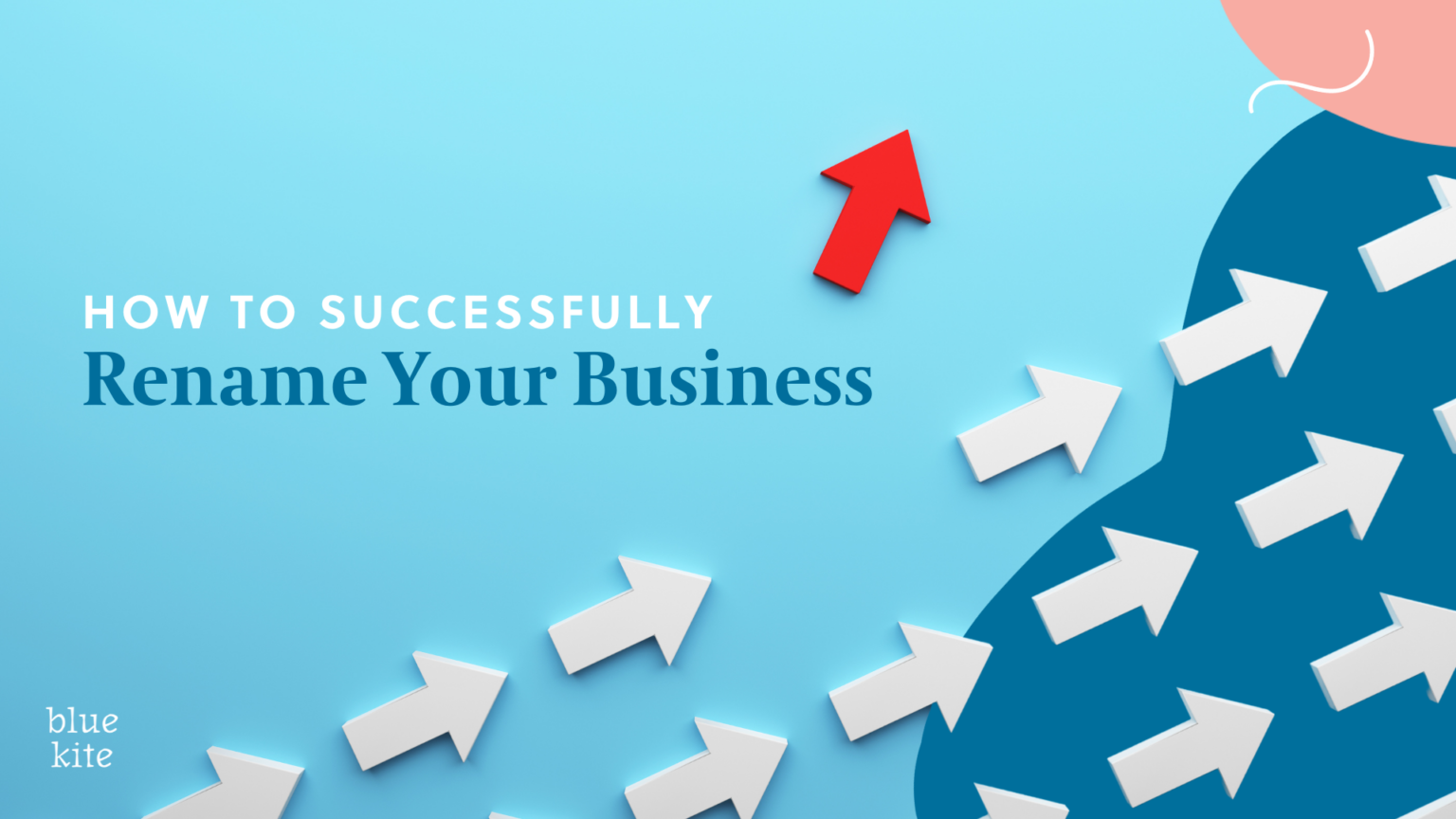
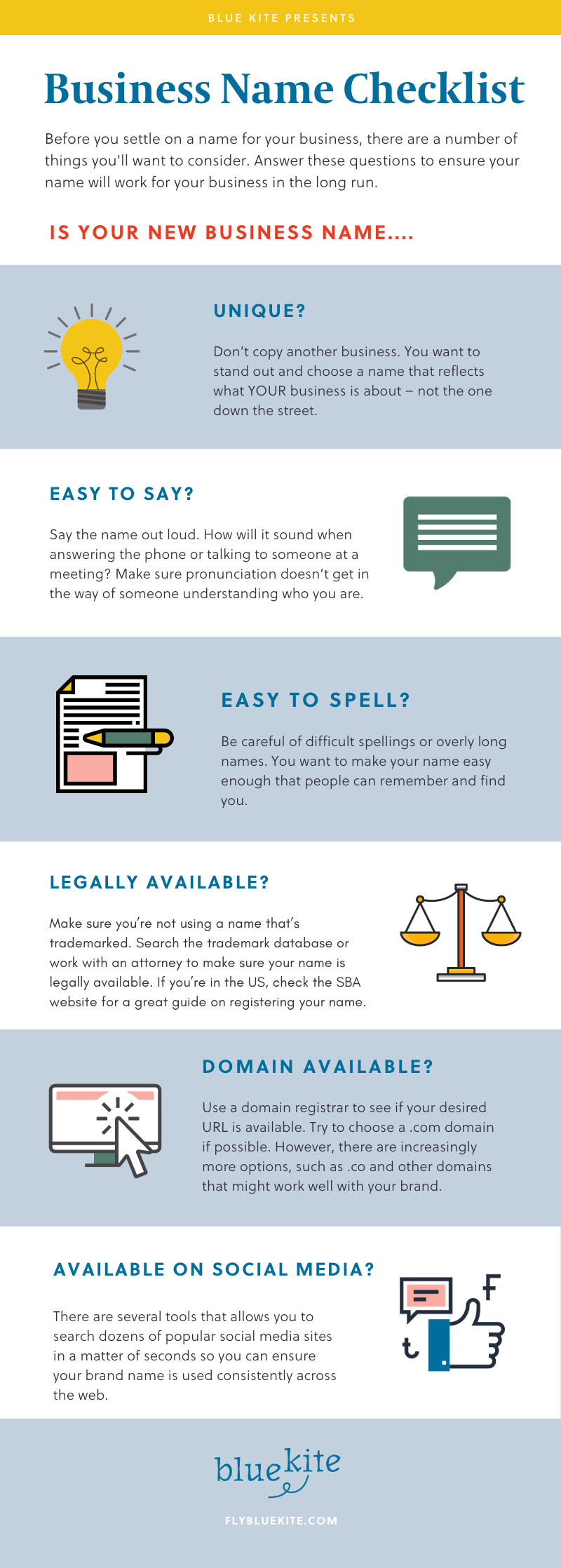
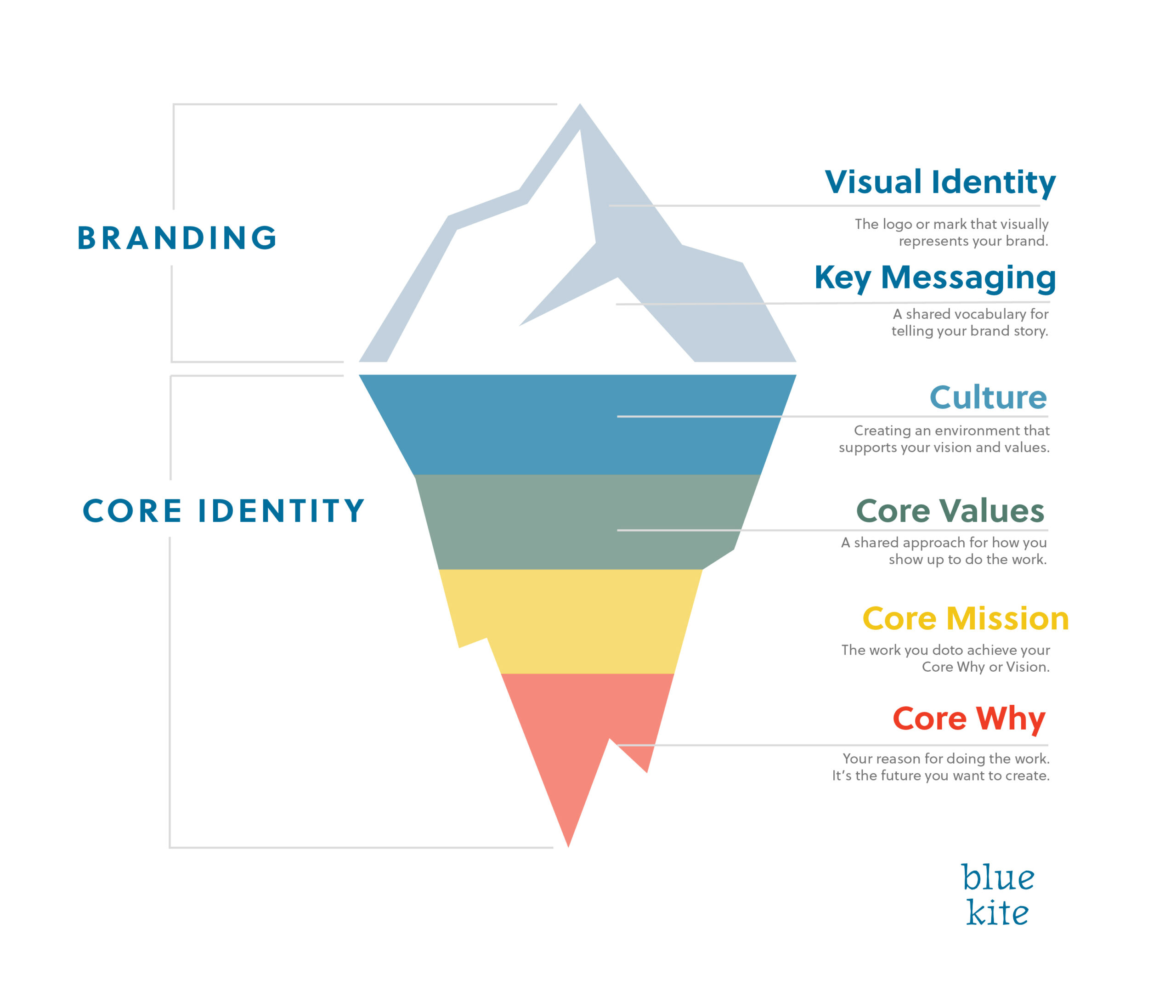


One reply on “How to Successfully Rename Your Business”
thanks so much laura …. i really love the way you broke it down …this was really helpful!